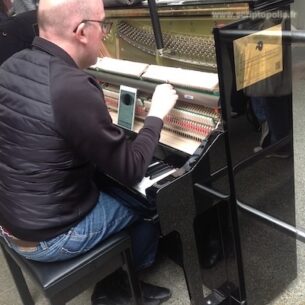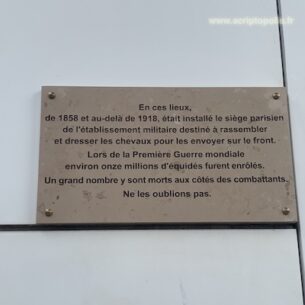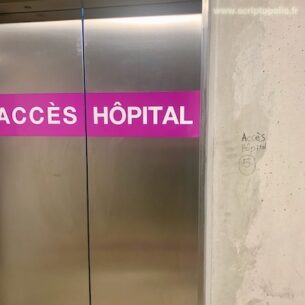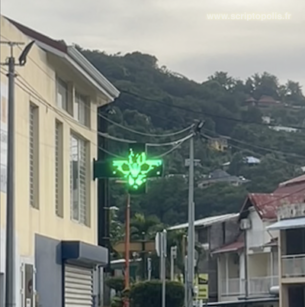Identify
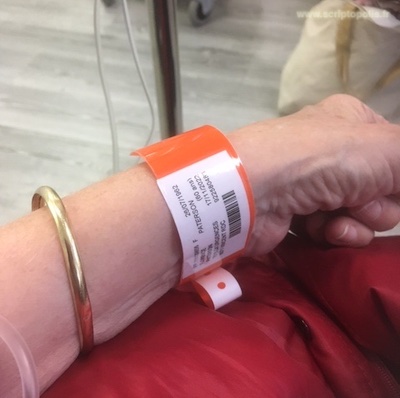
By our guest: Florence Paterson
Paris, November 2022.
Emergency ward. After some paperwork at the counter and a stay in the waiting room, a nurse shouts my name. I follow him, passing the automatic doors that lead to the heart of the emergency ward. In the small consultation room, after a few questions and a check of my vitals, a nurse puts a wristband on my arm. Made of orange plastic, it is clipped around my left wrist. It is designed not to be unclipable, and has to be cut to be removed. I know that from having worn (a blue) one in other circumstances (a pass at a vacation spot), luckily it was loose enough to slip out of my hand and into my pocket and put back on when needed. The nurse sticks a label on the wristband with my name, date of birth, age, gender, name of the ward, date, and barcode. I’m bar-coded. The samples of blood drawn from my vein are linked to me by this barcode. It’s my blood. Likewise, the bag from which hangs the tube connected to my arm will be assigned to me, as well as some documents. The first thing the nurse who welcomed me did when I was transferred from one ward to another was to cover the first barcode label on my orange wristband with a second one, which had the same indications except for the name of the ward. For two days, every healthcare worker I met asked me my name and my date of birth. To my relief, my identity is not verified by reading the wristband, I’m a speaking subject.
However, I discovered another identifying use of this wristband, linked to the division of the reception and care areas. We are in the waiting room inside the emergency ward, the one beyond the automatic door and facing the rooms where, for hours, everyone has been coming in and out to have their blood drawn, to see a doctor, to have a cast put on, to pick up a paper. The calls follow one another to the point that the people waiting there have learned each other’s names, and one lady whispers to another who has just sat down, “I think they’re looking for you, they called you in”. Around 10 pm, a security guard enters the scene: “The accompaniers have to leave, you must go to the waiting room”, the one at the entrance of the emergency ward before the automatic door. A young man kisses his partner, says a few reassuring words, and leaves. The security guard returns, addresses an elderly couple, tells the man he must leave. “We are together,” they refuse. She is the one wearing the orange wristband, but she seemed to be looking after the man, who did not look too well. They remain seated side by side. When the security guard returns again, he insists. The couple exits, together, I hear their voices in the corridor, complaining. The incident is discussed by some of the people around: it’s stupid, the accompaniers have been there for hours without bothering anyone, what’s the point of making them leave? In a corner, another elderly man is sitting next to his wife in a wheelchair, keeping a low profile and so far the security guard has not spotted him. But he is discovered and has to leave. “What about you?” says the irritated security guard to a young man. Unlike myself and a few others, he has no tube in his arm, a very visible sign that we are patients. The man raises an arm, fist clenched, and pulls up his sleeve without a word. The orange wristband speaks for him, the security guard nods.



